
The HDF & FIVA Preservation Award in Honor of Dr. Frederick Simeone
The preservation of unrestored historic vehicles is crucial. Preserved examples of our automotive past tell a story through their originality, holding details that are sometimes lost after a restoration. To help encourage and honor the preservation of these cars, The Hagerty Drivers Foundation and FIVA (the Fédération Internationale des Véhicules Anciens or international federation of historic vehicles) present a Preservation Award at concours events across the country. This award is presented in honor of the late Dr. Frederick Simeone, a champion of the preservation of historic vehicles.
This year at the Greenwich Concours d’Elegance, our Preservation Award went to a 1905 Maxwell Model H Touring Car. This vehicle has miraculously survived for 120 years without being fully restored! M.S. Herman & Co. recently recommissioned the Maxwell to return it to running condition while being sympathetic to its original character. Two interns from McPherson College’s Automotive Restoration program; Cash Nab and Gavin Powell working at M.S. Herman & Co. for the summer had the opportunity to perform much of the work on the Maxwell and presented the car at the concours. “It’s really nice to have young folks in this industry,” says Cash Nab. “Because everyone always says it’s dying, but it’s really not. There’s a lot of us out there keeping it going, and a place like McPherson is great for that.”
With a swift crank, the 16-horsepower two-cylinder opposed engine came to life. Interns behind the wheel, the Maxwell crossed the podium to receive its honors.
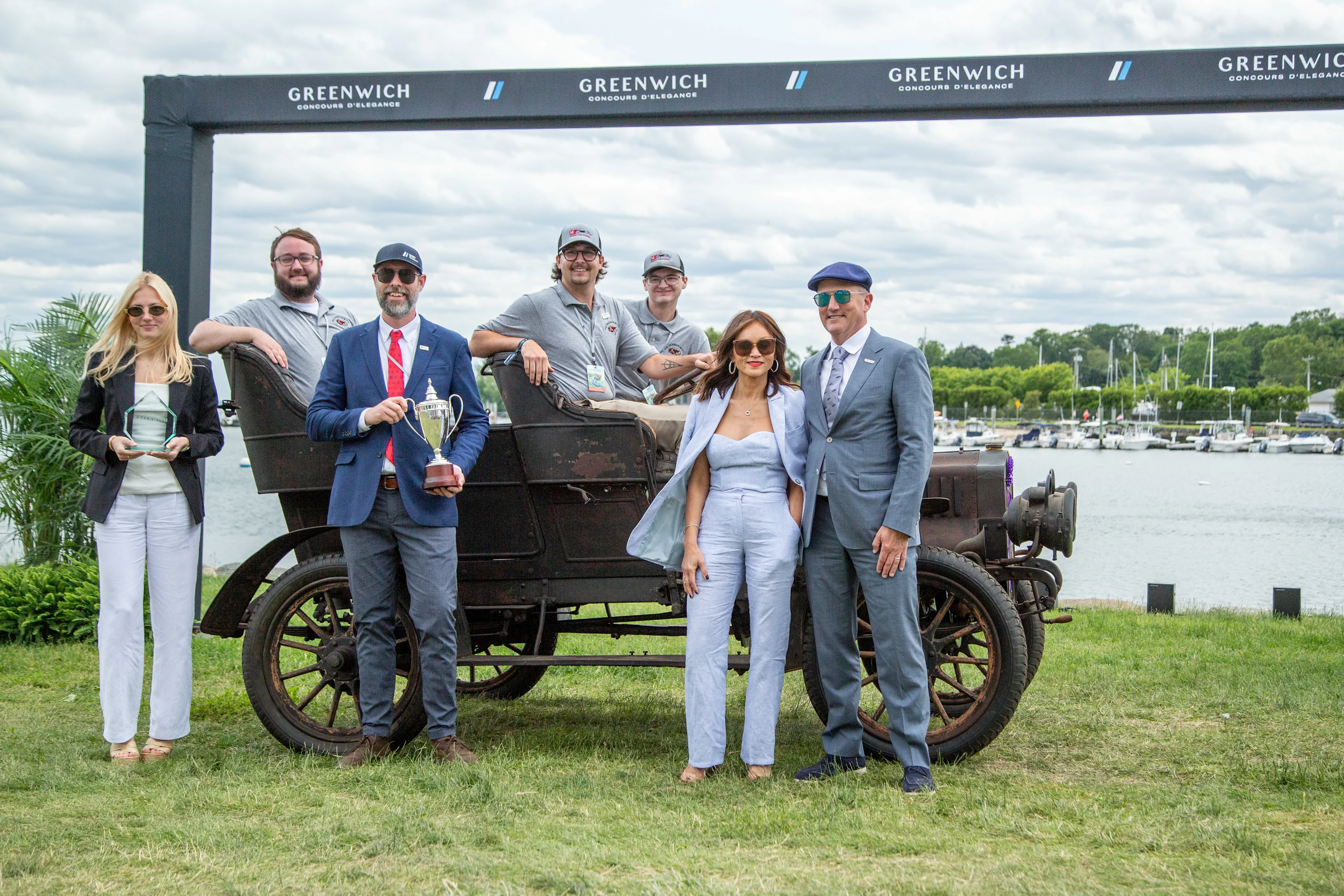
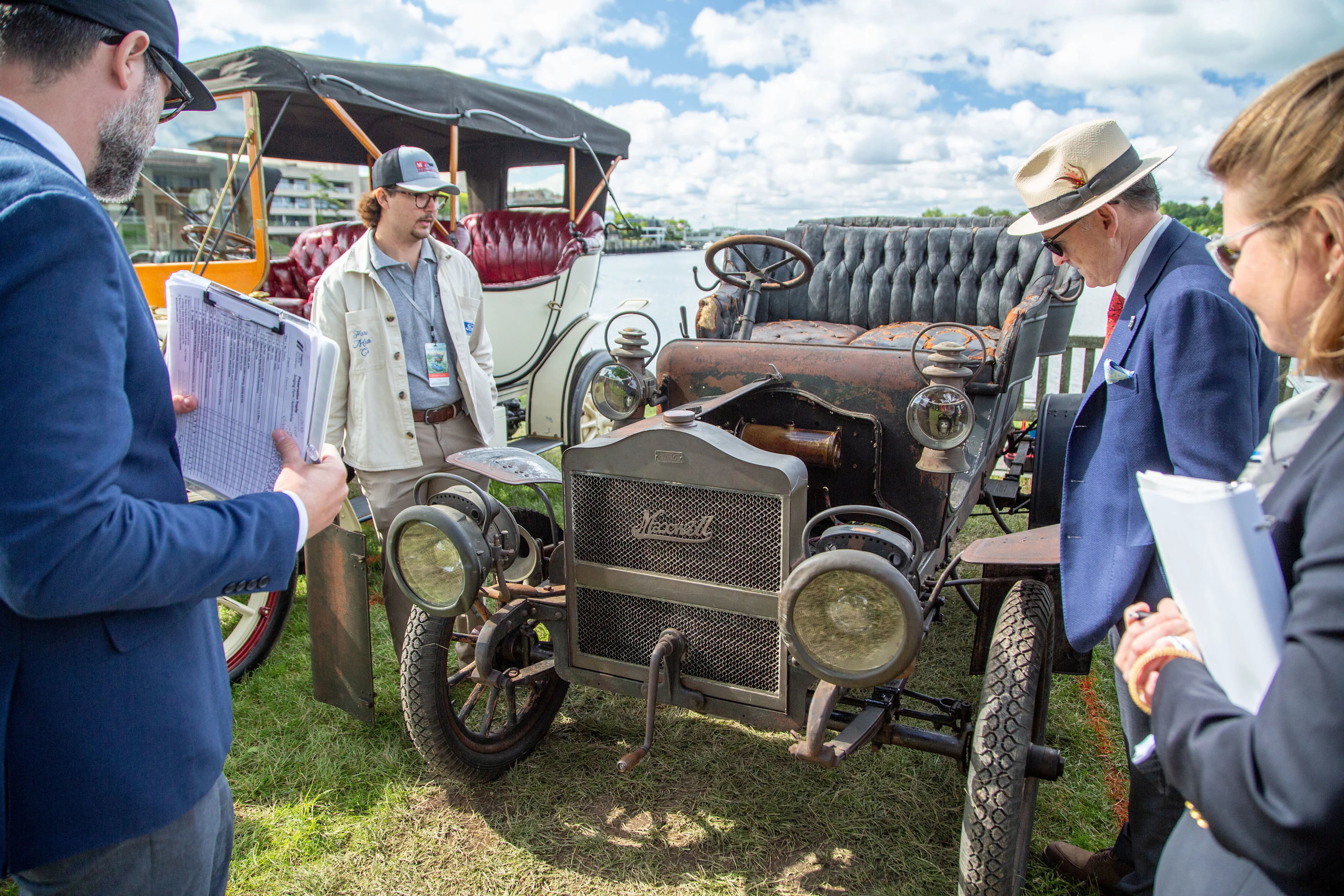
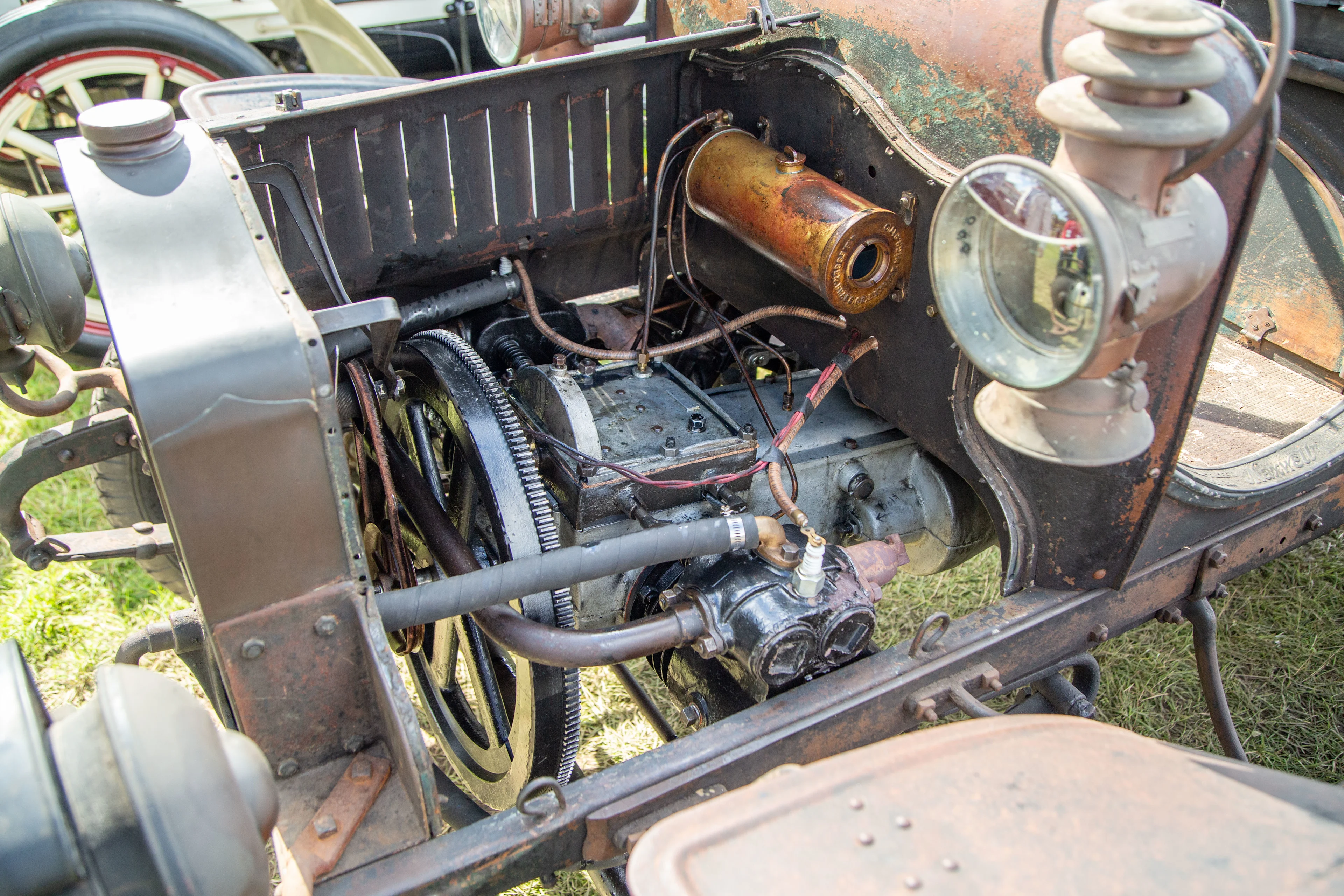
Beyond the uncommon opposed two-cylinder engine layout, the Maxwell Model H features innovations such as a shaft drive, instead of the chain drive typical of cars at the time. The engine doesn’t have a water pump, but is cooled through thermo-siphoning like Ford’s Model T that came after it. Power is sent through a three-speed transmission, and braking is handled by mechanical drums on the rear wheels. Atop the frame is a 5-passenger touring body, notable because of the side-entrance doors which were an uncommon feature at the time, rather than a singular rear door dividing the seat.
This Model H is also notable as the earliest-known Maxwell to exist. Production began in 1904 in Tarrytown, New York, and all cars were designated for the 1905 model year, with over 800 produced. Numerous other Maxwell models of varying size and power followed, with a four-cylinder engine offering in 1906.
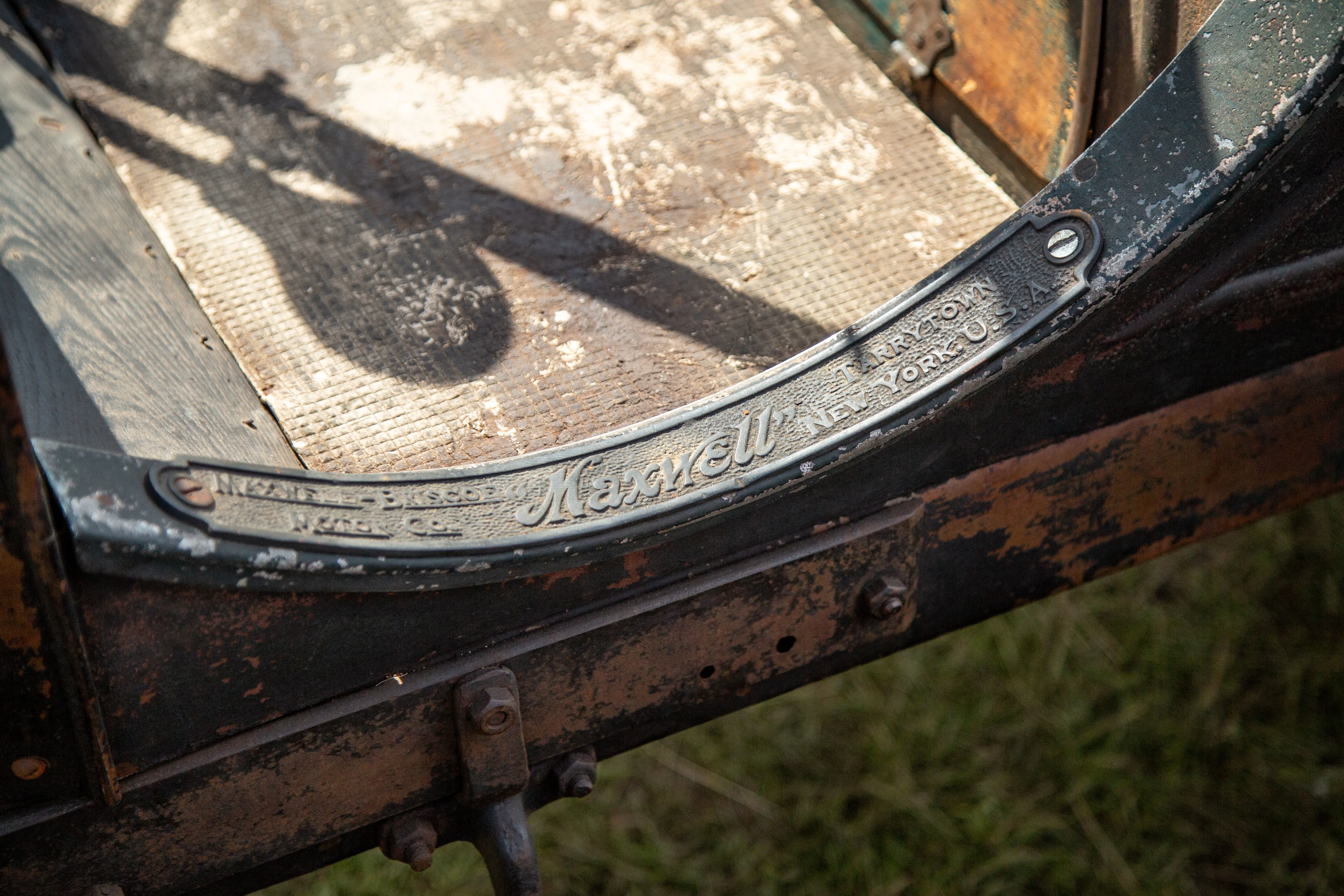
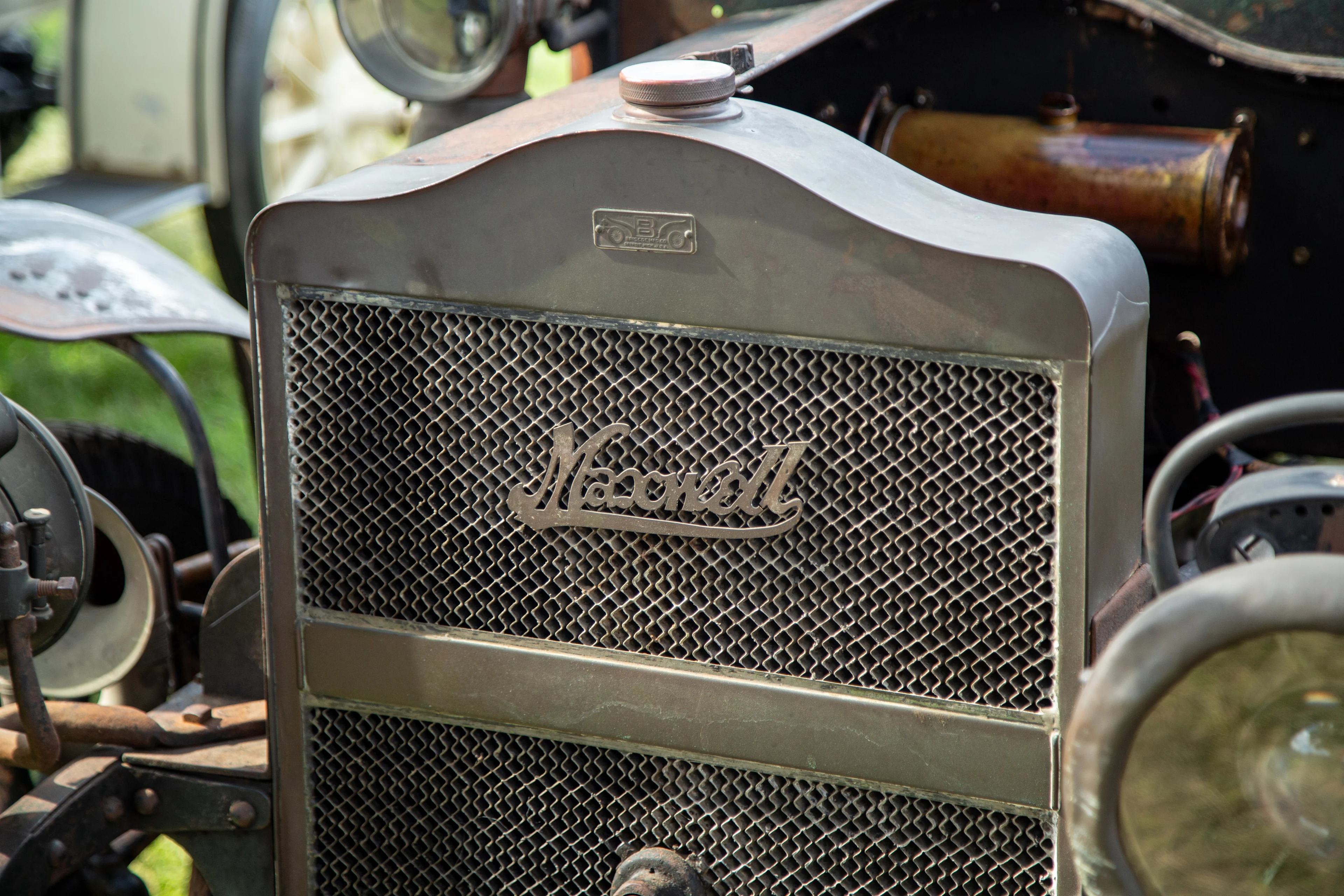


Above: The details of this Maxwell tell the story of its life.
This Maxwell was on display in a special class at the Greenwich Concours: “The Glidden Tour Reunion”, which showcased early horseless carriages that either participated in the original Glidden Tour or were representative examples.
The Glidden Tour, launched in 1905 was an arduous rally, organized by the AAA to prove the capability of the automobile, advocate for safe motoring, and promote public acceptance of the emerging technology. The first running drew over 20 entrants that drove from New York City, througout New England, up and down Mt. Washington, and back to the city. The route was largely unpaved, and covered approximately 870 miles!

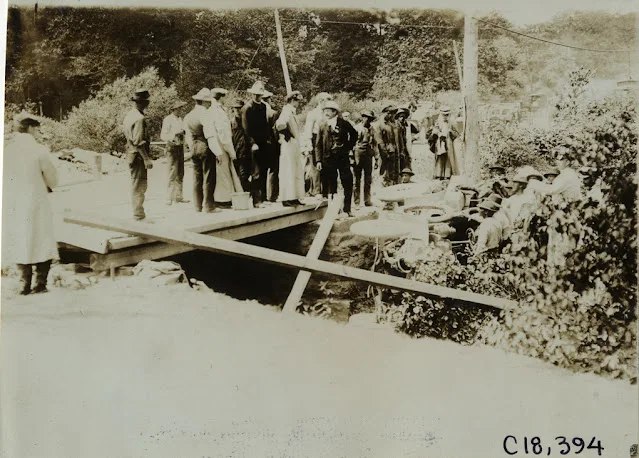
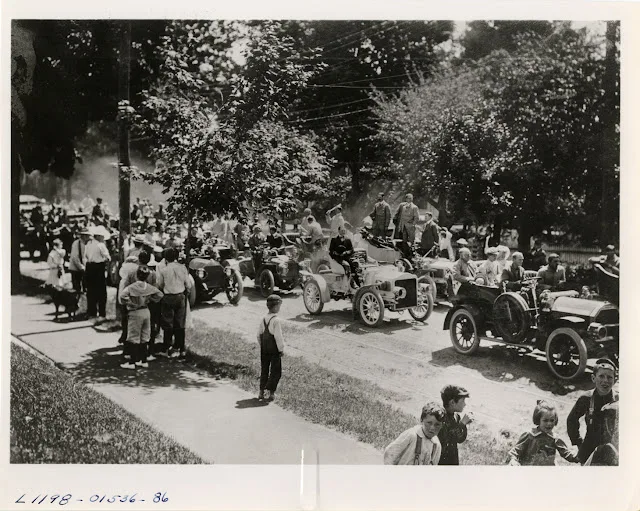
Top: Ralph Colburn and passengers in the Maxwell that ran in the 1905 Glidden Tour. Credit: Detroit Public Library.
Left: Onlookers observe an automobile accident on the 1905 Glidden Tour. Credit: Detroit Public Library.
Right: Motorists lined up during the 1905 Glidden Tour are a local spectacle. Credit: Detroit Public Library.
The 1905 inaugural Glidden Tour featured a Maxwell of the same model as this car. Unfortunately, the original car is not known to exist but this unrestored example provides a great insight into the vehicle that competed in this important event. A total of five Maxwells competed in the 1905 event. Winners of the Glidden were not chosen by speed, but rather a score based on consistency of the tourers. Entrants were also able to vote on each other’s performance.
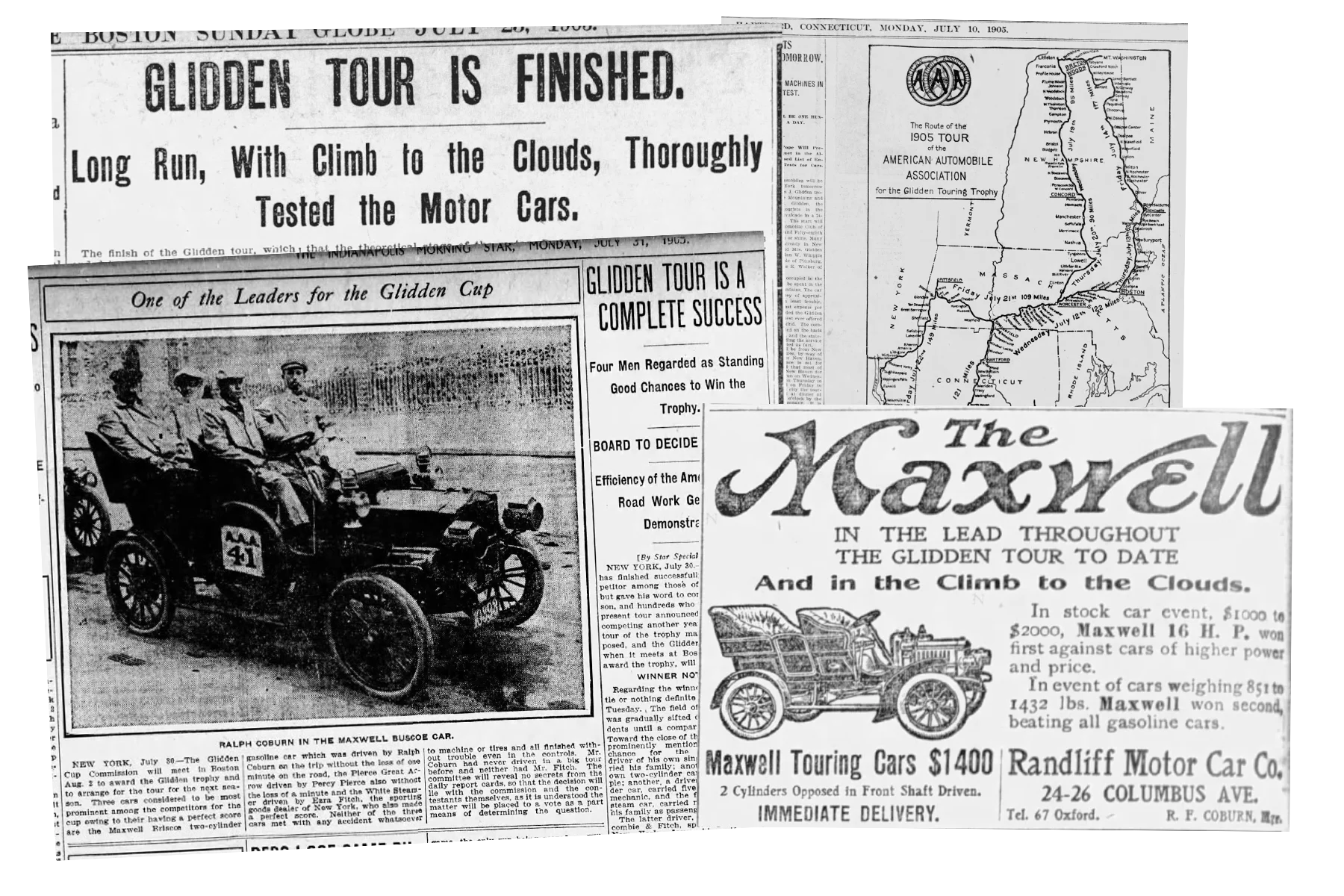
Above: The Glidden Tour generated much press and made for good advertising.
Maxwell was founded by Jonathan Maxwell and Benjamin Briscoe in 1904, building cars in Tarrytown, New York before building more factories abroad. Maxwell focused their attention on building lightweight, lower-priced cars rather than overbuilt, expensive ones, a recipe that proved successful when they competed in the Glidden. Maxwells, driven by both the company itself as well as private owners, competed in numerous Glidden Tours until the final event was run in 1913. Afterwards, the Glidden was discontinued as they felt the tour had accomplished it’s mission: automobile ownership was increasing, road conditions were improving nationwide, and automotive technology was becoming more advanced. It was becoming evident that the “newfangled” automobile would be a boon to people across America, and no longer exclusive to the fortunate few.
Part of Maxwell’s success can be attributed to the good performance shown on events such as the Glidden Tour, which they capitalized on as they grew to become a major auto manufacturer. Today, Maxwell cars are well regarded for their innovative construction and good performance, attributing to their usability for a brass-era car. Although the Maxwell brand was defunct by 1925, Walter P. Chrysler saw the value in Maxwell’s design and used it as the basis for the very first Chrysler automobiles to be built!
Watch a video on the 1905 Maxwell here: